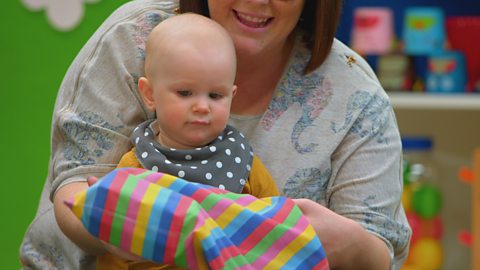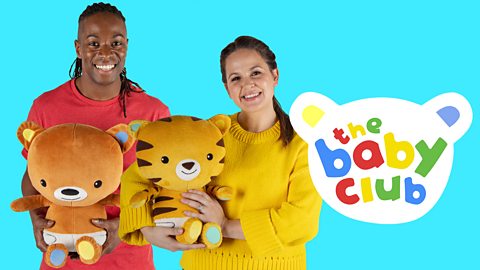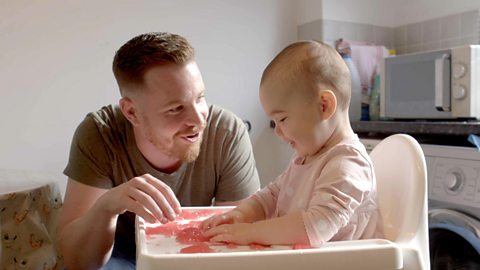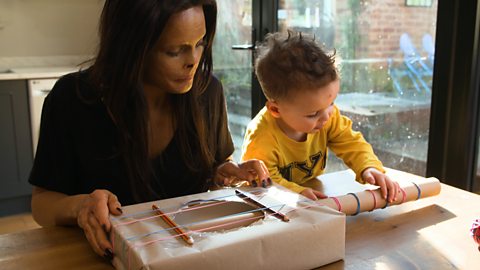Babies are experiencing everything for the very first time. From the sound of a bumblebee to the feeling of a fluffy dressing gown, the world is full of new things to delight their senses.
For this reason, they donât need expensive toys to have fun â there are possibilities for play all around them.
With the help of our friends The Baby Club, we've put together list of everyday objects that are magical for your little one and some games you can play with them.
1. A sponge

Not just for bathtime, a sponge is great for giving your little one a mini workout. Theyâll enjoy squeezing and chewing on its unusual texture.
You can also use it to name body parts as you mime âwashingâ their head, shoulders, knees and toes. Thereâs a song in there somewhereâŠ
2. Vegetables
Vegetables have all sorts of weird and wonderful textures for babies to explore. Some are bumpy, like potatoes and carrots. Some are smooth like courgettes. Theyâre perfect for sensory play.
Let your baby feel different vegetables with their hands and mouths, naming them and saying words like âroughâ, âbumpyâ and âsmoothâ.
You could even make a stamp out of a spud for some messy potato printing.

3. Socks
Socks are easily turned into sock puppet characters to bring storytime alive. Having them as characters can help you let loose with different voices to really engage your baby.
4. A mirror
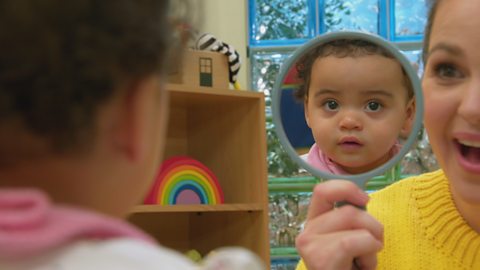
Mirrors + babies = endless fun.
Did you know that babies usually canât recognise themselves in mirrors until theyâre around 18 months old? This means they often think that the image in the mirror is another friend to play with!
5. A sieve
Sieves have the potential to blow baby minds. Why canât they be filled up?! Try incorporating a sieve into bathtime play.
6. A scarf
Scarves are super simple props to help play a game of peekaboo, which is fantastic for developing your babyâs sense of object permanence. This is the idea that things donât just disappear when they are out of sight.

7. A stick
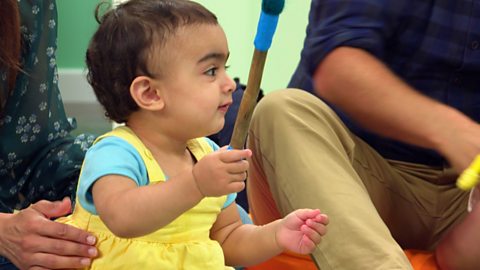
Sticks can be âroughâ, âsmoothâ or even ânobbly-bobblyâ, so theyâre great to talk about in a sensory play session. You could also tie ribbons around them so your budding rhythm gymnast can twirl some colour through the air.
8. Pots and pans
While youâve got the sticks out⊠why not create a kitchen cupboard drum kit? Babies and toddlers love to bash out a rhythm on pots and pans. Learning how to copy rhythms is great for their language skills too.
9. A teddy bear
Not only are they great for a cuddle, but teddy bears can be a great way of teaching your baby the names for different body parts or modelling parts of your daily routine like mealtimes and bedtime.

10. A toothbrush
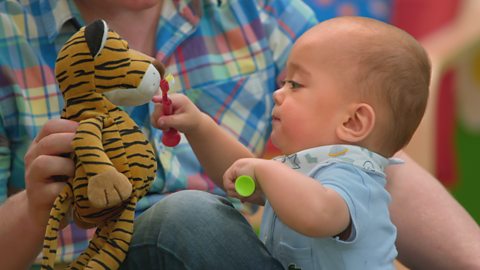
You donât need teeth to play a toothbrushing game!
Pretend play like this helps normalise toothbrushing for babies and toddlers and can help prepare them for the real thing. Itâs also great for building their motor skills.
11. An umbrella
Umbrellas are great for adding an extra sensory dimension to your outdoor adventures.
Not only will they keep you and your baby dry on a rainy walk, but you can stop, listen and talk about the dripping sounds on the canopy.
Even if itâs bright and sunny, you can take an umbrella and have fun playing with the shadows it casts over the pavement.

12. Plastic cups

Cups are brilliant for tapping out rhythms, stacking and toppling games, or even a good old-fashioned pretend tea party.
13. A magazine
Looking for an easy way to make your baby laugh? Try ripping sheets of paper with them â for some reason, it seems to have a very high hit rate!
14. An egg box
Egg boxes are great hiding places for small toys and other objects. Try hiding something in the box, building tension by saying âreadyâŠsteadyâŠâ and then naming the object when itâs revealed â âitâs a spoon!â.
If your little one is a bit older, they can have a go at guessing what might be hidden away. Maybe you could give them a few clues?

15. A hat

Your baby is likely to be fascinated by the sight of you in a funny new hat.
They might want to try it on themselves or give it a feel and a chew. Say âhat onâ and âhat offâ as you take it on and off. This can help babies to learn the meanings of place words.
16. A cardboard box
The possibilities are endless when it comes to cardboard boxes. They are the basis of all sorts of imaginative play, whether itâs making cars, dens or even more outlandish creations like kitchens!
17. A banana
Not just for snacking, bananas can double up as a phone to play simple copying games with your baby.

18. A bag
âWhatâs in the bag?â is a great go-to game to use whatever objects you have to hand.
Why not try popping some of these magical items in a bag of some sort (even a pillowcase will do!) and pulling them out to amaze your baby.
Build up their expectation with a âready⊠steadyâŠâ, name the item for them and let them explore each in the ways weâve suggested above â theyâll love it!
